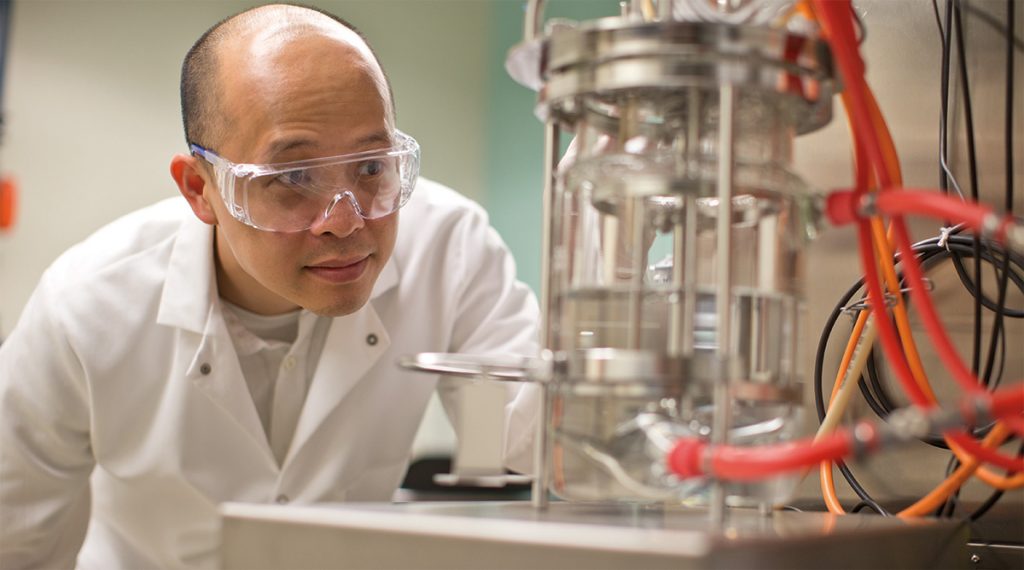The Center for Bioenergy Innovation (CBI) at Oak Ridge National Laboratory (ORNL) was recently chosen as one of four US Department of Energy (DOE) Bioenergy Research Centers to receive renewed funding, with the quartet of centers collectively receiving up to $590 million over the next five years, pending yearly reviews.
One specific focus of CBI is on bioprocessing, which is a specialty of UT Ferguson Faculty Fellow in Chemical Engineering Cong Trinh and the reason for his important role on the project.
“I am a member of one of the CBI teams that focuses on consolidated bioprocessing, which is a process that uses a microbial biocatalyst that is capable of degrading lignocellulosic biomass and converting it to jet fuel precursor or biobased product in a single fermenter,” said Trinh, who works as a professor out of the Department of Chemical and Biomolecular Engineering in the Tickle College of Engineering. “Specifically, we are using a cellulolytic, thermophile bacterium Clostridium thermocellum on bioenergy crops such as woody poplar or switchgrass to make ethanol or 2,3-butanediol.”
Trinh explained that the team’s bacterium of choice works by creating enzymes that break down the crops into short-chain polymers, helping released complex sugars known as oligosaccharides that are digested by the host.
In turn, the host uses it as an energy and carbon sources, with the resultant waste including carbon dioxide, hydrogen, and fermentative products.
Those fermentative products are the goal of the entire process, providing a way to turn biomass into fuel, but there are still steps to overcome, as Trinh explained.
“This biocatalyst is a specialist in degrading biomass but not very good at making the target products,” he said. “My project is to identify pathway enzymes that can function at elevated temperatures in excess of 50 degrees Celsius (around 122 Fahrenheit) and are compatible with this microbe’s habitat. Once the genes encoding enzymes are introduced to this microbe, we aim to make it not only good at degrading plant biomass but also redirecting the carbon to the target products instead of CO2 and other byproducts.”
Trinh went on to say that efficient capture of all carbon in lignocellulosic biomass is important to make sustainable and renewable products, minimizing the greenhouse gas footprint while meeting society’s demands for energy and consumer products.
In addition to CBI, other teams announced, and their focus are:
- Center for Advanced Bioenergy and Bioproducts Innovation, led by the University of Illinois at Urbana-Champaign, which is integrating recent advances in agronomics, genomics, biosystems design, and computational biology to increase the value of energy crops;
- Great Lakes Bioenergy Research Center, led by the University of Wisconsin and Michigan State University, which is developing science and technological advances to ensure sustainability at each step in the process of creating biofuels and bioproducts from lignocellulose;
- Joint BioEnergy Institute, led by Lawrence Berkeley National Laboratory, which is using the latest tools in molecular biology, chemical engineering, and computational and robotics technologies to transform biomass into biofuels and bioproducts.
The efforts are part of the DOE’s Genomic Science Program, under the Office of Science.
